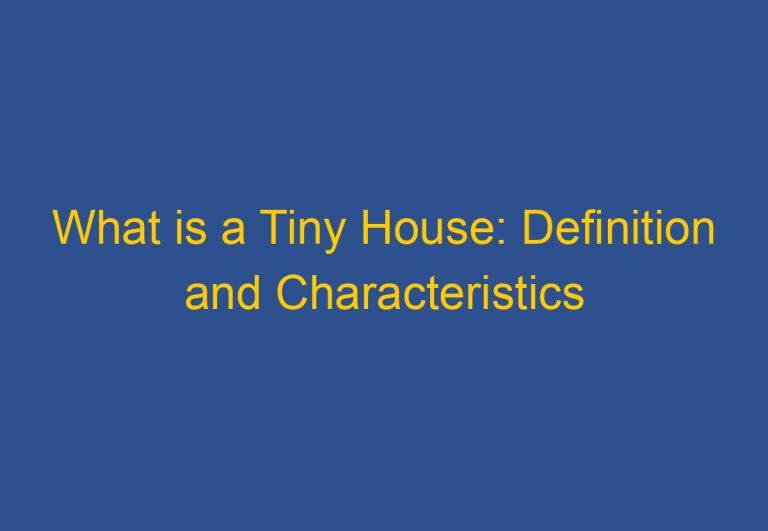How Long Does It Take to Build a Tiny House: A Comprehensive Guide
Building a tiny house can be an exciting and rewarding experience for those who are looking for a more minimalist lifestyle. However, one of the most common questions that people ask is how long does it take to build a tiny house? The answer to this question can vary depending on several factors, such as the size of the tiny house, the level of experience of the builder, and the budget available.
For those who are planning to build their tiny house themselves, it’s important to keep in mind that the process can be time-consuming. According to the Tiny Life website, building a tiny house can take around 500 hours on average. However, this estimate can vary depending on the size and complexity of the tiny house, as well as the skill level of the builder. It’s also important to plan ahead and budget accordingly to ensure that the building process goes as smoothly as possible.
On the other hand, those who choose to hire a professional to build their tiny house can expect the process to be completed much faster. According to some estimates, a professional builder can complete a tiny house in as little as 120 to 300 hours, depending on the size and complexity of the project. However, this option can be more expensive, so it’s important to weigh the pros and cons carefully before making a decision.
Planning and Preparation
Before embarking on the journey of building a tiny house, it is essential to plan and prepare thoroughly. This section will cover some of the critical aspects of planning and preparation that one needs to consider when building a tiny house.
Designing Your Tiny House
The first step in building a tiny house is designing it. One needs to consider the size, complexity, and space requirements when designing a tiny house. It is crucial to have a clear idea of what one wants in their tiny house before starting the building process. Many resources are available that can help one design their tiny house, such as books, online forums, and tiny house plans.
Sourcing Materials and Tools
Once the design is finalized, the next step is to source the materials and tools needed to build the tiny house. It is essential to research and find the best quality materials and tools that fit the budget. One should also consider the skill level required to use the tools and materials when sourcing them.
Understanding Legal Requirements
Building a tiny house requires knowledge of building codes, permits, and zoning regulations. It is crucial to research and understand the legal requirements in the area where one plans to build their tiny house. Failure to comply with legal requirements can lead to hefty fines or even demolition of the tiny house.
In conclusion, proper planning and preparation are crucial when building a tiny house. One needs to consider the design, sourcing of materials and tools, and legal requirements before starting the building process. By taking these factors into account, one can build a tiny house that meets their needs and complies with legal requirements.
Construction Process
Building a tiny house is a time-consuming process that requires careful planning and execution. The construction process can be divided into three main stages: building the foundation and frame, installing plumbing and electrical systems, and finishing the interior and exterior.
Building the Foundation and Frame
The first step in building a tiny house is to lay the foundation and build the frame. This involves pouring the foundation, framing the walls, and installing the roof rafters. The framing must be sturdy and able to withstand the weight of the house, as well as any weather conditions that may occur.
Installing Plumbing and Electrical Systems
Once the foundation and frame are in place, the next step is to install plumbing and electrical systems. This includes installing a toilet, shower, and kitchen sink, as well as running electrical wiring throughout the house. It is important to ensure that all plumbing and electrical work is done safely and up to code.
Finishing Interior and Exterior
The final stage of the construction process is to finish the interior and exterior of the tiny house. This includes installing insulation, windows, and doors, as well as siding and roofing. Cabinets, countertops, and flooring are also installed during this stage. The finishing touches, such as storage solutions and HVAC systems, are added to complete the tiny house.
The construction process can take anywhere from a few months to a year, depending on the builder’s construction skills and expertise. The schedule can also be affected by the weather conditions and the availability of materials. Professional builders who have a dedicated facility can reduce the construction timeline down to about 300 hours, while DIY builders may take up to 500 hours to complete the project.
Overall, the construction process of a tiny house requires efficiency and careful planning during the planning phase and construction phase. By following a construction timeline and ensuring that each task is completed properly, a completed tiny house can be set up and ready for use in no time.
Frequently Asked Questions
What is the typical timeline for constructing a tiny house?
The timeline for constructing a tiny house varies depending on several factors such as size, complexity, and skill level. On average, it takes about 500 hours for an average DIYer to build a tiny house. However, professional builders with a dedicated facility can reduce this time to about 300 hours.
Can you complete the construction of a tiny house quicker than a traditional home?
Yes, it is possible to complete the construction of a tiny house quicker than a traditional home. Tiny houses are smaller and require less time and materials to build, making them faster to construct than traditional homes.
What factors influence the construction time of a tiny house?
Several factors can influence the construction time of a tiny house, including the size, complexity, skill level of the builder, and availability of materials. The more complex the design and the larger the tiny house, the longer it will take to build.
Is it possible to expedite the building process of a tiny home?
Yes, it is possible to expedite the building process of a tiny home by using pre-fabricated materials or hiring professional builders with experience in constructing tiny houses.
How does the size of a tiny house affect the building duration?
The size of a tiny house affects the building duration in that the larger the tiny house, the longer it will take to build. However, a smaller tiny house can also take longer to build if it has a more complex design or requires more intricate details.
What are the stages involved in building a tiny house, and how long does each take?
The stages involved in building a tiny house include planning, designing, acquiring materials, building the foundation, constructing the frame, installing utilities, and finishing the interior and exterior. The duration of each stage depends on the size and complexity of the tiny house, as well as the skill level of the builder.










